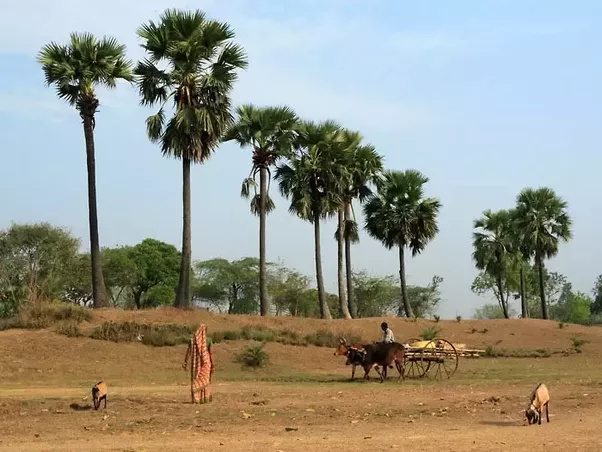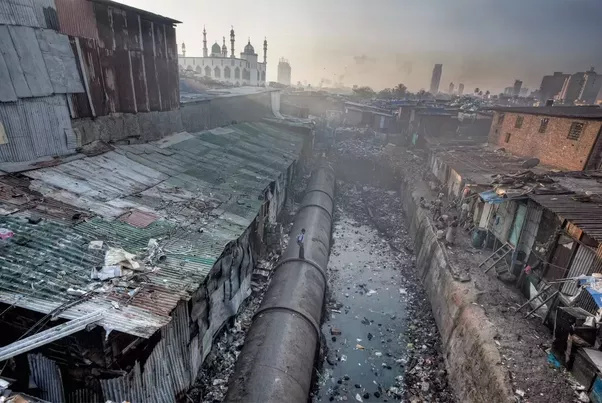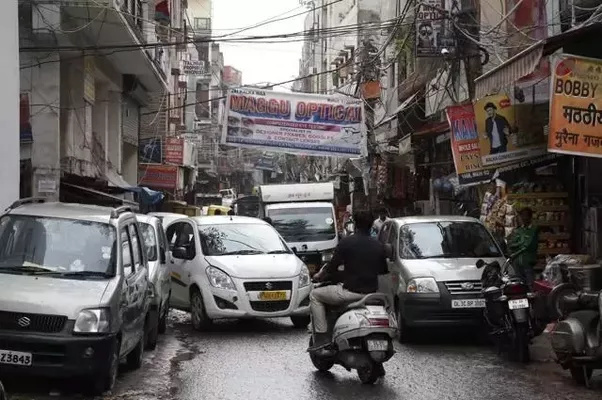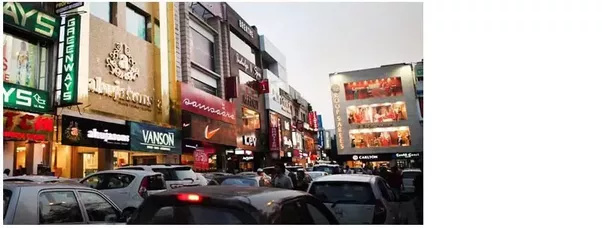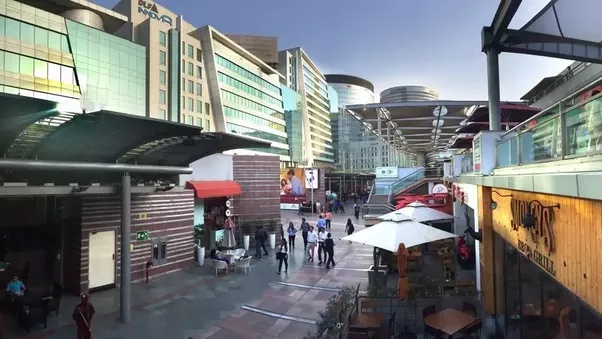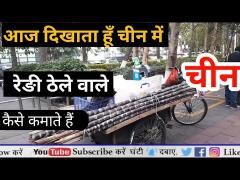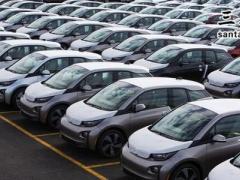quora:印度真如媒体描述的那般贫穷吗?
(译者:老猫喝酒)Is India actually poor like what media depict them?印度真如媒体描述的那般贫穷吗?My honest question. We kn
(译者:老猫喝酒)
Is India actually poor like what media depict them?
印度真如媒体描述的那般贫穷吗?
My honest question. We know India has a huge economy but many people said India is poor. So I ask this
我诚恳的发问。我们知道印度有着巨大的经济但许多人说印度很穷。因此我想问问这个。
美版知乎quora网贴翻译
Ryan J Farrick, Neuroscience student, logistics manager, lived in India, and traveled elsewhere.
Sort of. I have a long answer waiting for you after these five pictures. Bear with me, if you’re bored or curious enough.部分如此。在这五张照片之后我有一长段回答等着你。如果你有些无聊或是足够好奇,请对我保持耐心。
This is India:
这是印度:
Here’s what Google came up with for “West Bengal village.” I don’t see the village but still took this picture of something I’ve long suspected - there are few places in the world as beautiful as rural India.
这里是谷歌搜索“西孟拉邦村庄”出来的(照片)。我没有看到村子但依然由于一些我长期的怀疑保留着这张照片-世界上没有和印度乡村一样美丽的地方。
This is also India:
这也是印度:
Classic image of Dharavi, Mumbai’s most (in)famous slum. Not quite as pretty or clean as the village above.
对达拉维的传统印象,孟买最著名的贫民窟。一点儿也没有上图村庄的美丽,干净。
This is India, too:
这还是印度:
Govindpuri Market in New Delhi. Crowded, chaotic, and narrow streets are characteristic of the neighborhood. Paradise compared to Dharavi.
新德里的Govindpuri市场。拥挤,喧嚣,狭窄的街道是该地区的特征。相比达拉维真是天堂。
Here’s a market a few kilometers away:
这是几千米远的一处市场:
SouthEx Market in South Delhi. There’s a Nike store in the center and a McDonald’s on the other side of the huge road off-screen to the right.
南德里的SouthEx市场。中间有一家Nike店,并且在照片右侧外的宽阔马路对面有一家M记。
Lastly this is, unsurprisingly, also India:
最后是这一张,毫不惊讶,依然是印度:
DLF CyberHub in Gurgaon, just a ways south of Delhi. Amazing place which is prettier, cleaner, and more interesting than anything within at least a sixty-mile drive of my house in mid-Michigan.
古尔冈的DLF信息中心,在靠近德里的南边。一个比我中密歇根家驱车至少60英里方圆内的一切都更加美丽,干净,有趣的惊奇之地。
Apologies for the Delhi-centrism. I wanted to show some pictures of places I’ve been. In a way, I also think it demonstrates how apparent and vast changes can be within a single city. We could easily substitute the first picture with a village in Haryana or Uttar Pradesh, although I myself am partial to the Bengali landscape.
为(我的)德里中心主义道歉。我希望展示一些我去过地方的照片。某种程度上,我也认为这展现了目之所及的巨大变化如何发生于一个城市。我们可以轻易的将第一张照片换成哈里亚纳邦或者是北方邦的一个村子,尽管我个人更倾向于孟加拉邦的风景。
Back to the answer:
回到回答上来:
India is, by and large, a relatively impoverished country. Although the economy is growing rapidly and at a pace rivaled only by China, many ordinary people are still struggling to claim decent jobs and respectable incomes.
印度是一个巨大,相对贫穷的国家。尽管经济飞速增长且增速仅有中国才能与之抗衡,许多的普通人依旧为体面的工作和得体的收入而奋斗。
While the GDP per capita sits at $1500 - three times what it was only sixteen years ago - the Governor of the Reserve Bank of India, Raghuram Rajan, noted in a recent speech that the national median income is closer to $616 per annum. There is also an incredibly divisive and large gap between the earnings of educated urbanites and countryside agricultural workers.
而人均GDP达到了$1500—3倍于16年前-印度储备银行官员Raghuram Rajan在一次最近的发言指出,国内中产阶级的收入接近$616每年。受过教育的市民与乡村农业工作者的收入之间依然存在难以想象的分裂和巨大的鸿沟。
Modern-day India hosts an ever-expanding middle-class. More young people are being afforded opportunities to complete their studies and attend university than ever before. Literacy rates have also risen considerably since the 1960s and 1970s.
印度在现代有着不断增长的中产阶级。更多的年轻人被给予完成学业的机会并进入大学,相比于以往的任何时候。自20世纪60年代以及20世纪70年代起识字率也显著上升。
What shocked me on my first visit to India was the massive disparity between the nation’s privileged elite and omnipresent underclass. I spent most of my trip meeting and roaming around with the girl I was dating at the time, who was born and raised in New Delhi. Her parents had struggled financially while she was growing up. Years in the railways and working for the government paid off, though, and they began rapidly moving up the socieconomic ladder.
我首次参观印度时被民族特权精英和无处不在贫下中农间的巨大悬殊所震惊。我花了大部分旅行时间和我当时约会的女孩一起到处聚会和闲逛,她生长于新德里。
在她成长的过程中她的父母为财务方面奔波。常年投入于铁路并为政府支付工作,如是,他们开始迅速的提升社会经济地位。Getting to her flat from where I was staying was a sort of ride through contrasts. I’d take the Metro for half an hour, which was packed with people heading to their jobs Gurgaon and white-collar office workers on their daily commute. Once I reached my station, I’d have to haggle aggressively with a half-dozen auto-rickshaw drivers, pay 25 rupees to get to the society gate, and then walk another five.
从我居住的地方到她的公寓是一种出行的对比。我乘坐1.5小时的地铁,上面挤满了去古尔冈上班的人们和日常通勤的白领办公员工。一旦我到站了,我得和半机动三轮车的司机激烈讨价还价,支付25卢比到达社区大门,然后再走5分钟。
Not far outside the entrance to her neighborhood, there’d usually be a few child-beggars watched over by their skeletal caretakers. During monsoon, they’d bathe nude in the mudpuddles beneath the trees, leaving their dirty clothes strung up over the branches.
在她社区入口外的不远处,通常会有一些由他们瘦骨嶙峋看门人盯着的儿童乞丐。雨季时,他们会在树下的泥水坑里裸浴,并把他们的脏衣服挂在树枝上。
As soon as I walked past the guard and through the gate, the scene would change again. Fancy apartment complexes would run the length of the road straight ahead and the streets to my left and right. Most of the parallel-parked cars would be imported from Japan or Europe. Here and there would be a Mercedes or Porsche, with Honda and Toyota sedans sitting in closed drives and private lots.
一旦我走过门卫并穿过大门时,又是另一番情景。昂贵的公寓大楼鳞次栉比的与公路一同笔直延伸向前,道路畅通四方。多数平行停泊的车辆是从日本和欧洲进口的。奔驰,保时捷到处都是,本田,丰田小轿车停靠在封闭车道和私人车位上。
If there weren’t construction workers raising up a new building, the poverty of the street-side may as well have wandered off to another continent. The difference between the society and the road couldn’t have been greater.
若不是建筑工人建起了一座新的建筑,街道边的贫穷说不定还会蔓延到另一个大陆去。社群和路之间的不同不可能更大了。
That’s how India is, in a lot of ways - at least to my foreign eyes. There’s a mass of well-educated, high-earning people clustered in places like New Delhi and Mumbai and Bangalore, situated a ways above the middle-classes who save hard for Royal Enfield bikes and dream of becoming civil servants or engineers for foreign companies.
这正是印度的样子,在许多方面-至少在我这个外国人眼里。那里有许多受过良好教育,高收入的人们集群住在像新德里,孟买,班加罗尔这样的地方,高高在上于希望努力攒钱购买皇家恩费尔德自行车且梦想成为公务员,或外国公司的工程师的中产阶级们。
I’ve seen the term “The Other India” used to refer to the seventy-percent of people who live in rural communities and small towns. They constitute the brunt of the country and its population - they’re farmers, miners, craftsmen, small-time manufacturers, and a hundred-thousand other things. Oftentimes, the people of The Other India don’t make a lot of money; neither do they have big houses, big cars, or big bank accounts. Quite a few leave their beautiful farms and careening footpaths for careers pulling cycle-rickshaws or doing roadwork in the metropolises.
我曾看到过“另一个印度”这样的术语用来描述70%住在乡下社区和小城镇里的人们。他们是组成国家的主要力量,这些人们——他们是农夫,矿工,工匠,小作坊制造商和许许多多的其他职务。通常来讲,另一个印度的人们挣不到很多钱;他们也没有大房子,豪车或是巨额存款。他们中的一些人离开他们美丽的农场并开始在大都市的街道拉人力三轮车或者道路修补的生涯。
The poverty of the working poor in India can be overwhelming for Westerners. Dozens of people might sleep under a single underpass in winter, burning newspaper and waste in a barrel to stay warm. Outside of big malls, like Select CityWalk in Saket, are small tent villages, from which children run out to grab the wrists of affluent shoppers. I see a lot of tourists, especially first-timers, who don’t know how to react to everything around them. Sometimes they buy food or clothes for beggars or chai-selling children. Occasionally, if they’re in a touristic area, they’ll be taken advantage of a person preying on their sensitivity and guilt.
印度贫困者的贫穷对西方人而言是压倒性的。可能有很多人在冬季睡在一个地下通道里,通过焚烧报纸和油桶的残余来保持温暖。大商城的外面,像在Saket的“选择新天地”(新德里的一家商城),是小帐篷的村落,那里的孩子们跑出来抓住富有购物者的手腕。我见过很多旅游的人,尤其是第一次来的,不知道如何应对周遭的一切。有时他们
为乞讨者或是卖饮料小孩购置食品和衣物。有时候,如果他们在旅游区域,他们则会完全利用旅游者并在这些人的敏感与自责上大快朵颐。I guess there are a lot of arguments to be made about why India isn’t really poor. However, I think from a purely financial perspective, a large portion of the population - a majority, in fact - suffer from the effects of poverty. Many people, especially women, remain functionally illiterate and uneducated past primary school. They simply don’t get the opportunity to learn and grow as much as they’d probably like.
我猜有很多关于为什么印度并不是很穷的论据被列举。然而,我从纯粹的金融方面考虑,人口中的一大部分-大多数人,实际上-在贫穷的淫威下煎熬。很多人,由其是女性,依然不能识字而且没有受过小学教育。他们没有得到和他们大致所需的学习和成长机会。
Even the middle classes don’t make much from a Western perspective. $1,000 per month might be a great salary for most people in India, but that money doesn’t go far outside of the country - it’s not overly useful for international investment or engaging in regular leisure travel, especially after bills are accounted for. earnings of 12.8 lakhs per annum ($19,000) puts an Indian in the top 1% of earners.
即使是中产阶级在西方视角下也没有多少作为。$1000每月可能对大多数印度人来说是一大笔薪水,但这笔钱在外边的其他国家却显的寸步难行——它不能过度的在国际投资中产生效用或是作用于定期闲暇旅行,尤其是在钞票被记账之后。每年挣12.8万卢比让一个人印度人成为前1%的收入者。
In terms of local purchasing power, that’s pretty solid. $20,000 in Delhi is undoubtedly better than $100,000 in Manhattan. $400 or $500 per month nets a three-bedroom, marble-floored, wrapped-around-terraced apartment in the city’s South, while $3,000 per month might get you one moldy bedroom with a shitty kitchen in Harlem.
就当地购买力而言,这相当稳定。在德里拥有$20000难以置信的比在曼哈顿拥有$100000更好。$400或$500每月能在城市的南边供起一处三室一厅,大理石地板,有着旋转阶梯的公寓,而$3000每月可能只能在哈莱姆给你发霉的床铺和一个劣质厨房。
But remember that the median income is $616 per year. That’s $1.70 per day, which might be sufficient to eat in the countryside, but probably isn’t enough to fund a proper education or move up the socioeconomic ladder.
但切记中产收入是 $616每年。那就是$1.70每天。在乡下保证饮食或许足够了,但很可能不够为适当的教育存款或是提升社会经济地位。
I won’t pretend that everything I wrote is flawless or factually sound. If this answer gets any exposure, I’ll probably have a few comments contesting the truthfulness of chunks of my writing. That’s alright, as long as people give solid opinions rooted in reason rather than touchy nationalistic sentiments.
All I can say to conclude is that, based off what I’ve seen on seven separate visits to India, the poverty there is very bad and it is almost everywhere. That doesn’t stop people from being smart or working hard or creating amazing things, but it doesn’t change reality, either.我不会假装我写的一切都完美或是真实的声音。如果这则回答被展出,我将很可能得到一些质疑我文中很大一部分真实性的评论。好吧,只要人们给出基于原因的稳定观点而不是易怒的民族主义情绪。
所有我能总结的就是这些,基于我七次分散的印度之旅所见所闻,那里的贫穷非常严重而且几乎遍地开花。那不能阻止人们变得聪明或是努力工作或是创造出一些惊人的东西,但那也并不能改变事实。I have a good friend who grew up in a bad part of Mumbai. She described it as being one an awful area - maybe a step or two above Dharavi. Somehow, her dad managed to get a lucky break and land a job with a bank. Today, they all live comfortably. My friend ended up attending one of the best universities in Delhi, excelled academically, and won scholarships to study in the United Kingdom and Australia.
我有一个成长于孟买穷人区的好朋友。她描述那里就像是一个恶心的地方——可能比达拉维好一点。不知怎么,她的父亲努力设法得到了一次幸运的突破并在一家银行找到了工作。今天,他们都生活舒适。我的朋友进入了德里最好的大学之一,学术卓越,并获得了在英国和澳大利亚学习的奖学金。
I always wonder how many people there are, inside India and out, who could have done just as well as her or better if their dad had managed to get a lucky break.
我总是想知道印度里里外外到底有多少人,能够做到像她一样甚至更好,如果他们的父亲设法得到一次造化。
Unfortunately, most don’t. India is improving and improving fast, but until at least several more decades pass, I doubt the “poverty images” you associate with the country will cease to have at least some semblance of truth underlying them.
不幸的是,大多数人都不能。印度正发展的愈来愈快,但直到至少数十年过去,我怀疑你把和这国家相连的“贫穷印象”将会终止,至少一些类似事实支持着它们。
Still, I do think it’s important to bear in mind the progress which has been made since Independence. I can’t remember the statistics and exact numbers, but a lot of Indians have moved out of poverty since the 70s. There’s a whole side to the country that you wouldn’t recognize if you just thought it was all starving kids and straw huts (on another note, I’ve always been surprised at just how big some houses in random little villages are).
依然,我的确认为自独立以来的进步需要被铭记于心,我不记得统计数据和确切的数字,但是很多印度人都已经在70年代脱贫。如果你仅仅通过它看到饥饿的孩子和茅草屋你将不会认识到这是国家的一整个侧面(在另一份记录里,我总是震惊于一些小村庄里房子有多么的大。)
——————————————————————————————————————————
Nash Nazar,works at Paramount Software Solutions Inc
Interesting question and I would like to share a post came to my whatsapp group floating around. I am sure that will at least put some light at least if not answer this question completely.有趣的问题,我想分享一张传遍我的whatsapp组的图表。我保证如果没有全部回答这个问题也至少对其稍有启发。
Have a look ar below figures.
请看如下图表
Gold With Muthoot Finance = 150 tonnes
Muthoot金融的黄金=150吨
Manappuram Finance = 65.9 tonnes
Manappuram 金融=65.9吨
Muthoot Fincorp = 46.88 tonnes.
Muthoot Fincorp=46.88吨
Total = 262.78 tonnes.
总计=262.78吨
Gold reserves with Singapore = 127.4 tonnes
新加坡的黄金储备=127.4吨
Sweden = 125.7 tonnes
瑞典=125.7吨
Australia = 79.9 tonnes
澳大利亚=79.9吨
Kuwait = 79 tonnes
科威特=79吨
Denmark = 66.5 tonnes
丹麦=66.5吨
Finland =49.1 tonnes
芬兰=49.1吨
Hold Your Breath ..!!
屏住你的呼吸。。!!
India - individual wealth - Physical assets = RS 132-lakh cr.
印度-个人财富-有形资产=RS 132-lakh cr
India - Individual Wealth in Gold = Rs 65.90 lakh crore.
印度-个人黄金财富=Rs 6.590亿卢比
Kerala's Padmanabhaswamy Temple = 1,300 tonnes
喀拉拉邦Padmanabhaswamy寺庙=1300吨
Gold - All Temples in India = 3,000-4,000 tonnes
黄金-印度全部寺庙=3000-4000吨
Who Said...India is Poor...!!
谁说。。。印度很穷。。。!!
Bishwaroop Dasgupta,Indian
Yes. What the media has shown is true. Now it’s up to you whether to generalize if it is true for all of India, or if it is a part and parcel of India just like how the rich exist in India too.没错,媒体说的就是事实。现在由你来推广是不是这对全印度都是事实,或者这是印度的一部分或者一块区域,就像存在于印度的富人那样。
Different ends of the spectra of anything can co-exist.
任何不同结果的范围都可能共存。
So it’s not that India is poor. Nor is India rich. The ones calling India poor are thinking from a different point of view than the people claiming India is rich. Both are right from their own perspective. Both are wrong from the other’s perspective.
所以不是印度很穷。也不是印度很富。声称印度穷的人和支持印度富的人站在不同的角度上考虑。在他们自己的角度上来说他们都对。在对方的角度而言他们都错。
Yes, poor people exist in India. Yes, India does have a huge economy. No, one has nothing to do with the other.
没错,穷人分布在印度。没错,印度有着巨大的经济。不,一个人对另一个人毫不相干。
Protect yourself from propaganda, be it positive or negative. Analyse, and make up your own mind.
在宣传之间保护好你自己,无论它是积极或是消极。分析,确立你自己的看法。
I’m glad that you chose to satiate your curiosity and ask a genuine question, rather than just assuming stuff.
我很高兴你选择满足你的好奇心并问了一个真诚的问题,而不是仅仅假设。
版权声明
我们致力于传递世界各地老百姓最真实、最直接、最详尽的对中国的看法
【版权与免责声明】如发现内容存在版权问题,烦请提供相关信息发邮件,
我们将及时沟通与处理。本站内容除非来源注明五毛网,否则均为网友转载,涉及言论、版权与本站无关。
本文仅代表作者观点,不代表本站立场。
本文来自网络,如有侵权及时联系本网站。
-
1
चाइना में रेडी और ठेले Local shops in china || L...
- 2
- 3
- 4
- 5
- 6
- 7
- 8
- 9
- 10
-
1
चाइना में रेडी और ठेले Local shops in china || L...
- 2
- 3
- 4
- 5
- 6
- 7
- 8
- 9
- 10
